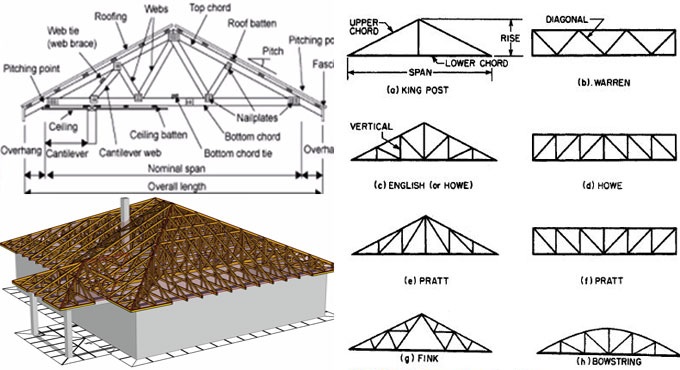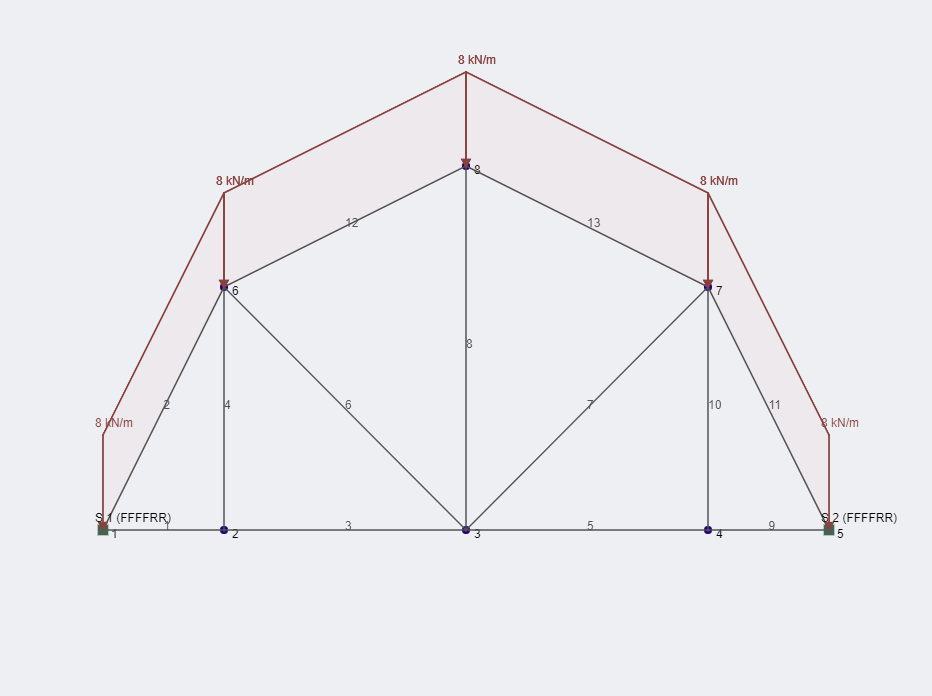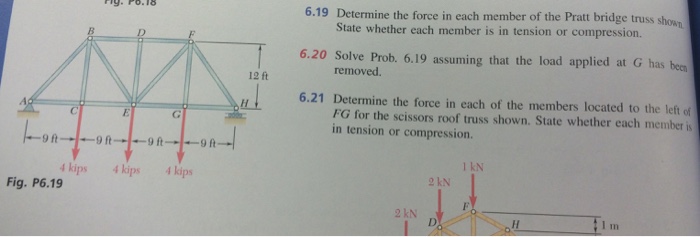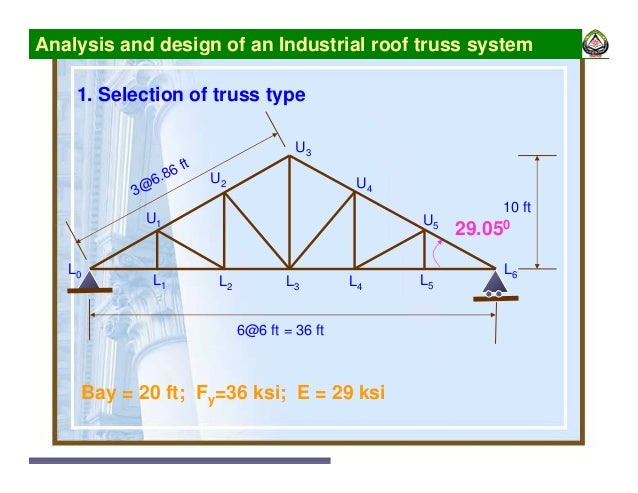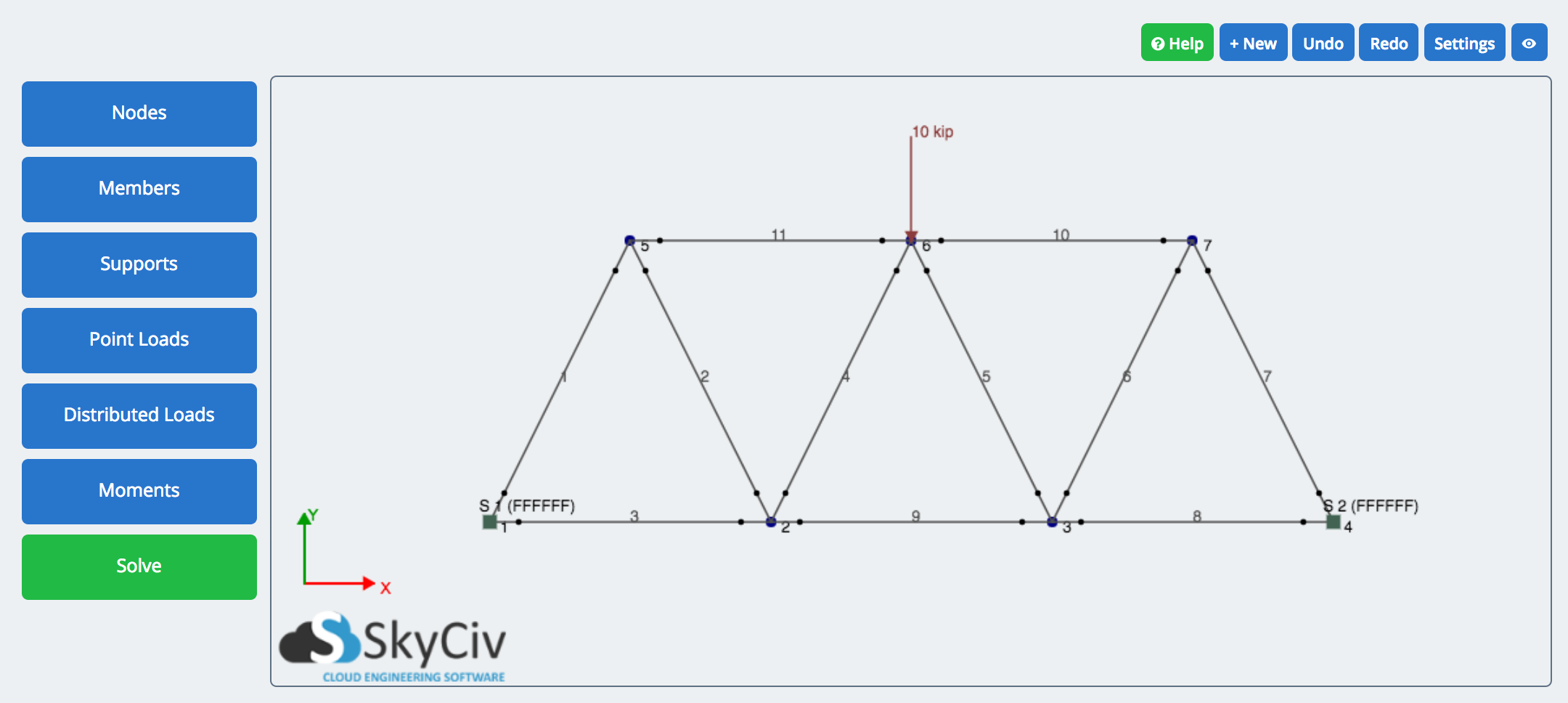A roof truss is a structural unit designed to frame a roof and to support the roof material interior ceiling insulation and forces caused by snow rain and wind.
This is a pratt roof truss the applied forces are.
A roof truss consists essentially of the following components.
Generally in a truss each joint must be connected to at least three rods or two rods and one external support.
A diving board or to a simple beam.
In both cases the total load 100.
However these two forces cannot be collinear so without the rod 13 the system will not be in equilibrium.
As a result of these applied forces the truss members will have compressive and tensile forces applied to them.
Nevertheless the problem as posed says that we have a total weight of 4000 pounds distributed uniformly across the.
This diagram actually shows concentrated forces at the joints which is where they must be for what we re doing.
The second shows the load being applied across the entire top of the bridge.
Determine the force in members ce de and df fig.
Rod 13 has two forces acting on it.
These forces must be found first before the internal forces can be found.
A pratt truss has been used over the past two centuries as an effective truss method.
This simplifies and produces a more efficient design since the steel in the diagonal members in tension can be reduced.
Answer to a pratt roof truss is loaded as shown.
The left support is a roller support which can only have a vertical y direction force applied to it because it moves freely horizontally.
One vertical force due to the wheel and the other at end 2.
Components of roof truss.
The vertical members are in compression whilst the diagonal members are in tension.
He strength of a column is also dependent on the.
The first shows a localized load in the center of the bridge.
Components of a steel roof truss.
Meriam statics john wiley sons 1966.
I upper chord members.
Battens with bracing from the rigid supports are needed to restrain the truss chords from buckling sideways.
This problem like the howe truss comes from j l.
Gang nail truss system bending force or more correctly bending moment is the result of a force applied to a cantilever for example.
We adopt the convention that compression is positive and tension is negative so a beam with a positive internal force will be pushing on the two joints it connects while a member with negative force will be pulling.
When a roof is to be provided for a building which does not have interior supports and the exterior walls are more than 12 m apart a roof truss will be a convenient arrangement to support the roof.















